How certain are we of the Universe’s ‘Big Freeze’ fate?
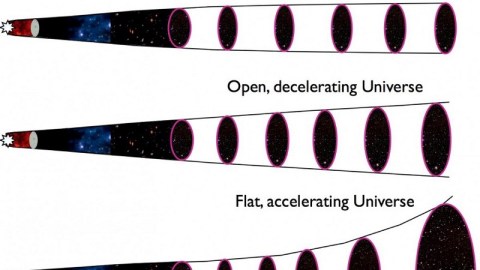
Dark energy tells us what the Universe is doing right now, and it’s disconcerting. But its fate has some incredible possibilities.
“Even if I stumble on to the absolute truth of any aspect of the universe, I will not realise my luck and instead will spend my life trying to find flaws in this understanding — such is the role of a scientist.” –Brian Schmidt
Ever since the expanding Universe was first discovered by Hubble himself, one of the greatest existential questions of all — what will the fate of the Universe be? — suddenly leaped from the realm of poets, philosophers and theologians into the realm of science. Rather than an unknown mystery for human mental gymnastics, it became a question that the acquisition of data and a knowledge of what existed and was observable could answer. The discovery that the Universe was full of galaxies, that it was expanding and that the expansion rate could be measured, both today and in the past, meant that we could use our best scientific theories to accurately predict how the Universe would behave in the future. And for decades, we weren’t sure what the answer would be.
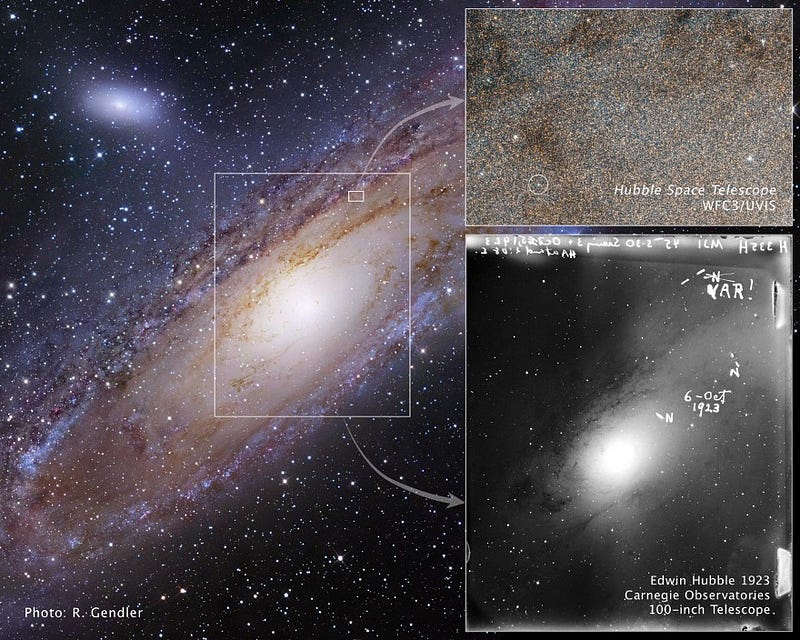
A number of astronomers and physicists were detractors of cosmology (the study of the Universe), deriding it as a science, claiming that it was merely “a search for two parameters.” Those parameters were the Hubble constant, or the present rate of expansion, and the so-called deceleration parameter, which measured how the Hubble rate was changing over time. But if the physics of General Relativity was correct, those two things would be everything we needed to know to understand the Universe’s fate. The more distant you can observe an object, the farther back in time you look. And in an expanding Universe, when you see the Universe at a younger time, not only are galaxies closer together, but they’re moving apart from one another at a faster rate! In other words, the Hubble “constant” isn’t really a constant, but is decreasing over time.
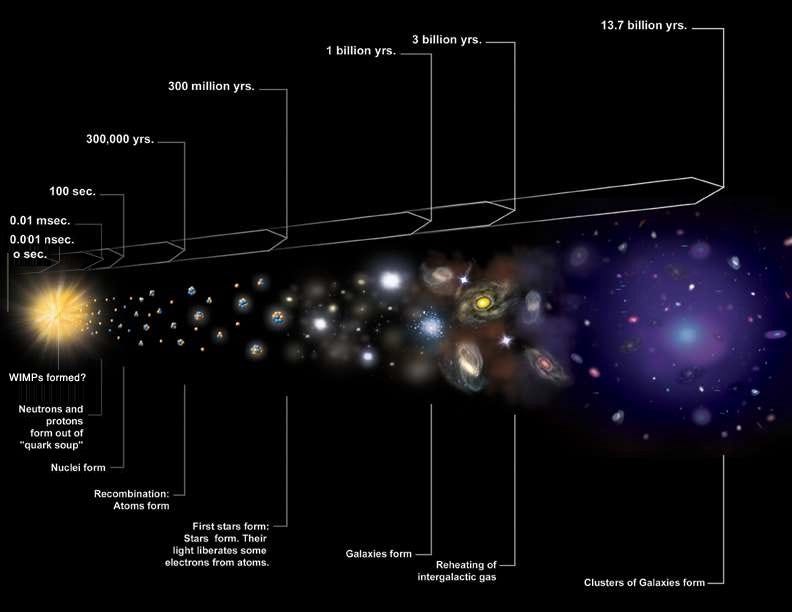
But how it decreases over time is dependent on all the different types of energy present in the Universe. Radiation (like photons) behave differently from neutrinos, which behave differently from matter, which behaves differently from cosmic strings, domain walls, a cosmological constant or some other form of dark energy. Normal matter is simply conserved mass, so as the volume of space increases (as the scale of the Universe, a, cubed), the matter density drops as 1/a³. The wavelength of radiation stretches as well, so its density drops as 1/a⁴. Neutrinos first act like radiation (a-4) and then like matter (1/a³) once the Universe cools past a certain point. And cosmic strings (1/a²), domain walls (1/a¹) and a cosmological constant (1/a⁰) all evolve according to their own physical specifications.
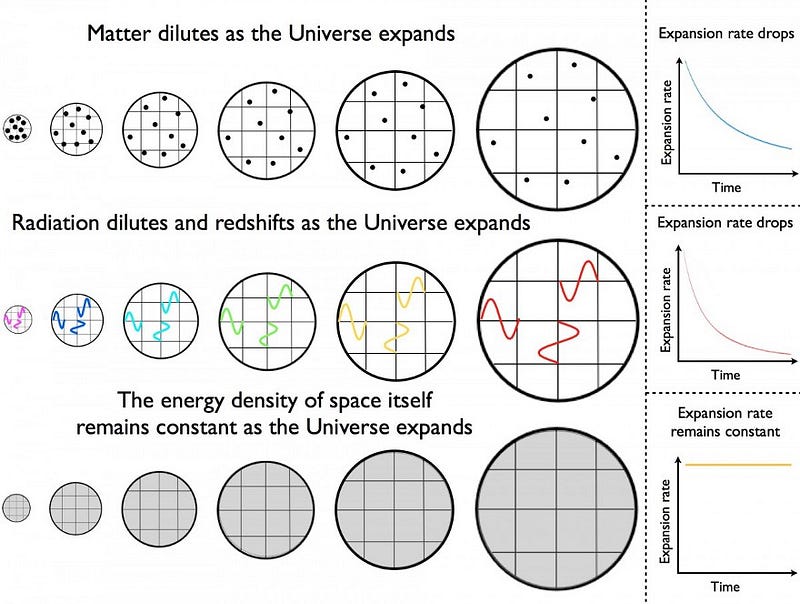
If you know what the Universe is made up of at any given moment, however, and you know how fast it’s expanding at that moment, you can determine — thanks to physics — how the Universe will evolve in the future. And that extends, if you like, into the future arbitrarily far, limited only by the accuracy of your measurements. Given the best data from Planck (the CMB), from the Sloan Digital Sky Survey (for Baryon Acoustic Oscillations/Large-scale structure), and from type Ia supernovae (our most distant “distance indicator”), we’ve determined that our Universe is:
- 68% dark energy, consistent with a cosmological constant,
- 27% dark matter,
- 4.9% normal matter,
- 0.1% neutrinos,
- and 0.01% photons,
for a total of 100% (within the measurement errors) and with an expansion rate today of 67 km/s/Mpc.
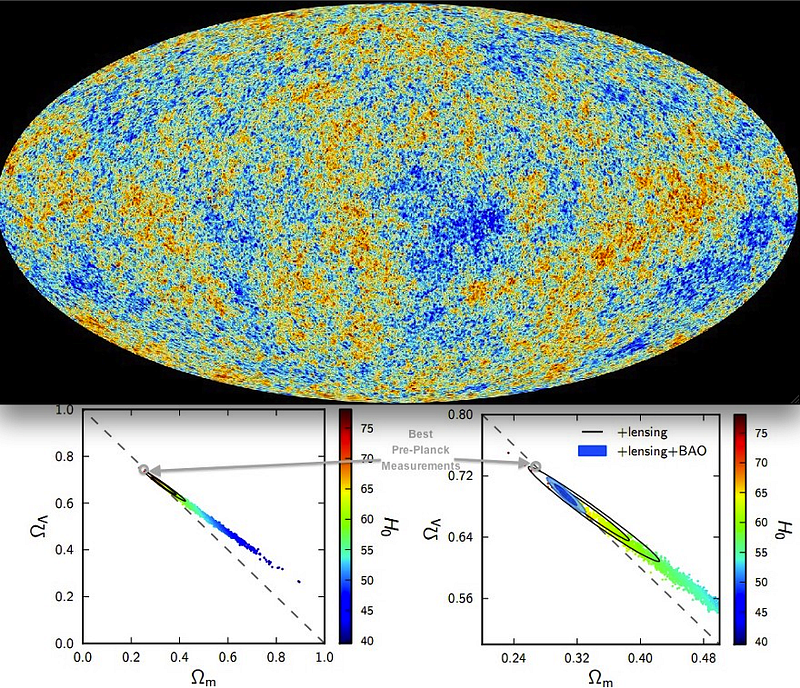
If this is 100% accurate, with no further changes, it means that the Hubble rate will continue to drop, asymptoting somewhere around a value of ~45 km/s/Mpc, but never dropping below it. The reason it never drops to zero is because of dark energy: the energy inherent to space itself. As space expands, the matter and other entities within it may get more dilute, but the energy density of dark energy remains the same. This means that an object that’s 10 Mpc away in the future will recede at 450 km/s; millions of years later, when it’s 20 Mpc away, it recedes at 900 km/s; later on it will be 100 Mpc away and receding at 4,500 km/s; by time it’s 6,666 Mpc away it recedes at 300,000 km/s (or the speed of light), and it moves away faster and faster without fail. In the end, everything that’s not already gravitationally bound to us will expand beyond our reach. In fact, 97% of the galaxies in the Universe are already gone, as even at the speed of light we’d never reach them, even if we left today.
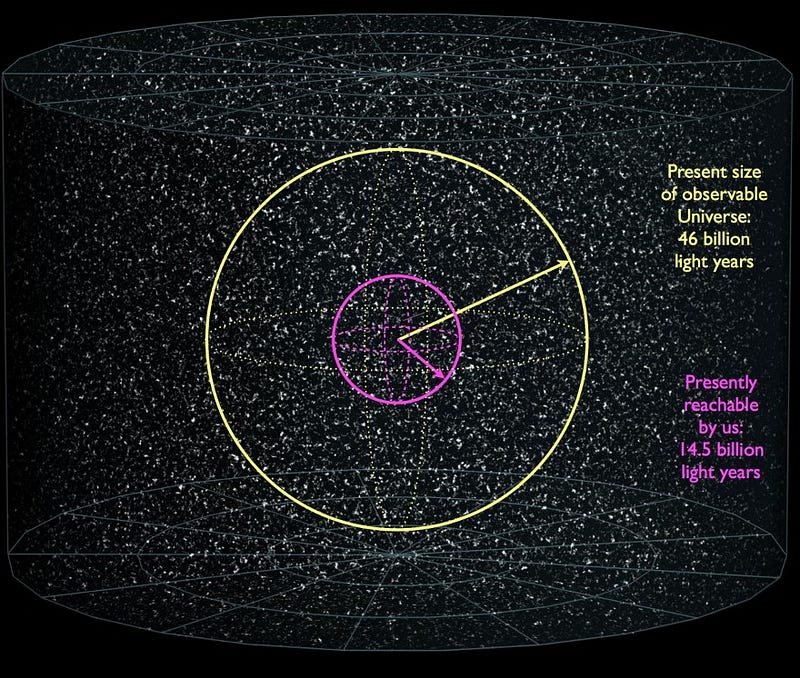
But dark energy may not be truly a constant. We might have measured that it evolves as 1/a⁰ according to our best measurements, but realistically, the best we can say is that it evolves as 1/a^(0±0.08), where there’s a little bit of wiggle room in the exponent. Moreover, it could change over time, where dark energy could become more positive, more negative, or could even reverse its sign. If we wanted to be honest about what dark energy can and cannot be, it’s more accurate to showcase that wiggle room as well.
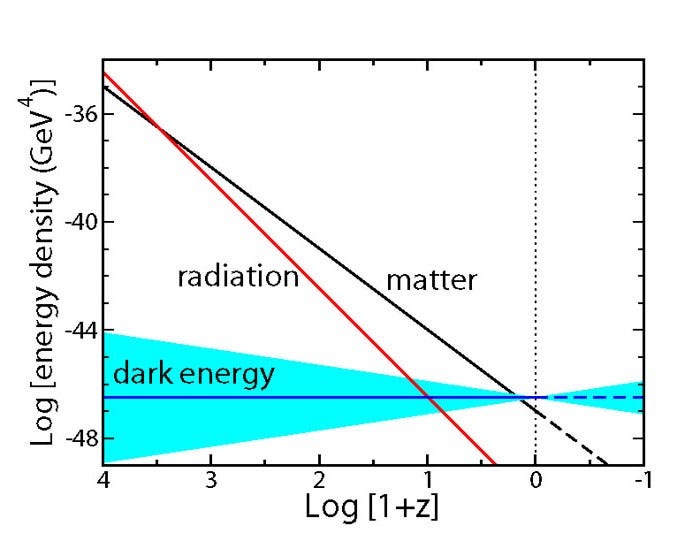
In the end, all we can go off of is what we’ve measured, and admit that the possibilities of what’s uncertain could go in any number of directions. Dark energy appears consistent with a cosmological constant, and there’s no reason to doubt this simplest of models in describing it. But if dark energy gets stronger over time, or if that exponent turns out to be a positive number (even if it’s a small positive number), our Universe might end in a Big Rip instead, where the fabric of space gets torn apart. It’s possible that dark energy may change over time and reverse sign, leading to a Big Crunch instead. Or it’s possible that dark energy may increase in strength and undergo a phase transition, giving rise to a Big Bang once again, and restarting our “cyclical” Universe.
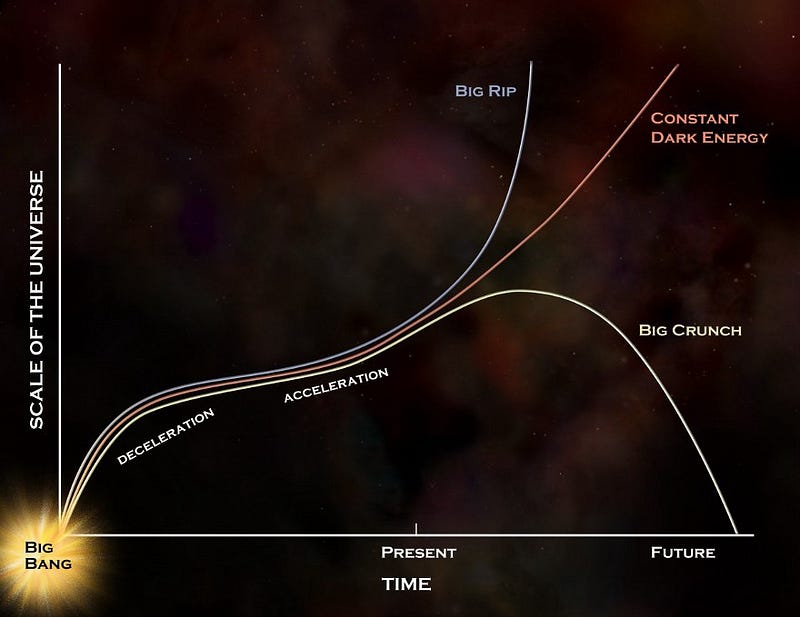
The smart money is on the Big Freeze, since nothing about the data indicates otherwise. But when it comes to the Universe, remember the golden rule: anything that hasn’t been ruled out is physically possible. And we owe it to ourselves to keep our mind open to all possibilities.
This post first appeared at Forbes, and is brought to you ad-free by our Patreon supporters. Comment on our forum, & buy our first book: Beyond The Galaxy!





